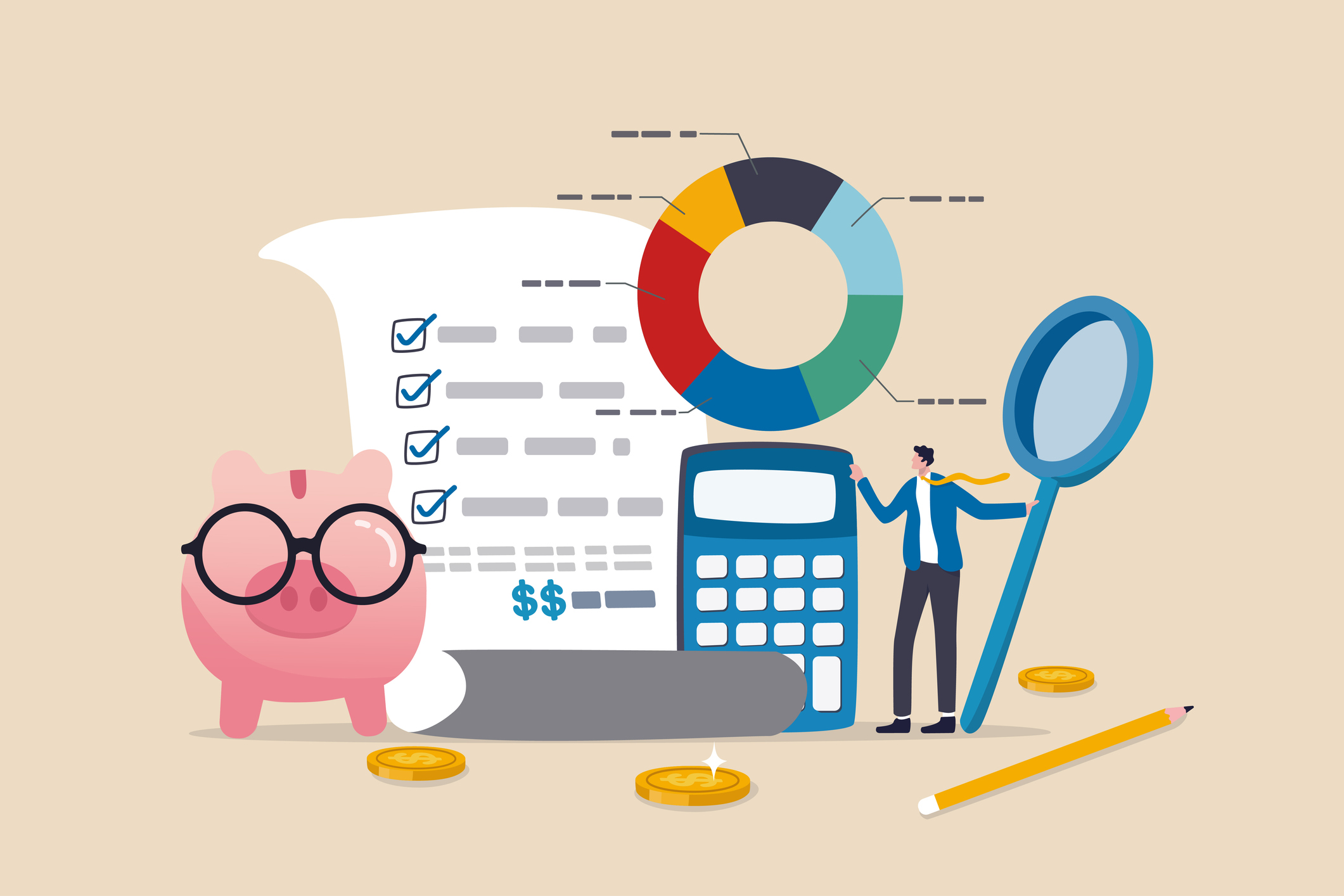More and more Americans are retiring before reaching age 65 and qualifying for Medicare. This brings up a thorny issue: what can be done for health insurance coverage in those intervening years? A marketplace/Affordable Care Act (ACA) plan, COBRA, or a spouse’s coverage all make for good options. But COBRA comes with a time limit and your spouse may want to retire with you, making a marketplace plan the only real viable option for millions of people.
These plans can be expensive. Very expensive. So the government offers ACA subsidies to help defray the costs. The key is to make sure you qualify. Fortunately, the qualifying stipulations are based on income levels. Your good savings habits and healthy bank account balance won’t factor into the equation. This makes it possible to retire with a few million bucks and still qualify for premium subsidies!
Who Qualifies?
You need to live in the US, be a citizen or legal resident, not incarcerated (seriously?), and have income no greater than 400% of the Federal Poverty Level (FPL). (This was expanded to 500% of the Federal Poverty Level for 2021 and 2022). Here’s a good caveat to know: if you’re married, you must file your taxes as married filing jointly in order to claim any ACA subsidies.
The FPL is based on the number of people in your household, and this can be a moving benchmark. It’s essentially you, your spouse, and anyone you claim as a dependent. This can include other relatives under your roof, such as elderly parents or a disabled sibling you care for, but only if you claim them as dependents. You kids qualify, too, though with some possible complications.
Divorced parents can claim their children as part of their household for the purposes of determining their FPL threshold. But they can only do so the years in which they claim their children as dependents! This may mean some haggling with a former partner over who gets the child tax credit for the year.
The reason household size becomes important is because the FPL thresholds move upwards as more people are added to the household. This means bigger ACA subsidies if household income remains static while the thresholds move higher.
Monitoring Your Child’s Income
Your child attending college on the other side of the country can also be included in your household for purposes of determining your subsidy level, but they must be your dependent. Moreover, their income will be added to your modified adjusted gross income for the year if they make enough money from a part time job to have to file a return (more than $12,550 in 2021).
Depending on where you fall on the FPL guidelines, this could push you up into a new tier and potentially increase or eliminate your ACA subsidies. But it gets more cumbersome for children with custodial accounts. The threshold for filing a return drops to $1,100 if your dependent child earned at least that much from dividends and interest during the year.
This has a few implications. First and foremost, don’t shift investment property to kids. It won’t help you earn greater subsidies, and your 19-year-old probably doesn’t have the fiscal responsibility to manage it well anyway. Secondly, it may be more beneficial not to include your child as a dependent in certain years.
You can run the calculation with the child in the household or excluded from it. If the difference in subsidies is greater than the benefits of the child/dependent tax credit, then exclude them. Include them when its less.
Be careful not to confuse your child being a dependent on your tax return with dependency status for the FAFSA. The two are separate animals. Being a dependent on a parent tax return does not impact dependency status when filing for student aid.
How the ACA subsidies work
ACA Subsidies come in two flavors: pay now and pay later. The pay now credit can be used to offset your cost each month while the pay later credit is claimed at the end of the year when you file your taxes. Most people use the credit to offset their monthly premiums, but this can lead to some nasty surprises.
Subsidies don’t come with a phaseout over different income levels. They’re structured as cliffs. This means that you will get pushed into a new subsidy tier (or disqualified entirely) if you’re just one dollar over the threshold! (The cliff has been suspended for 2021 and 2022. It is now capped at no more than 8.5% of household income.)
Additionally, the ACA subsidies for the current year are based on your income for the current year. They don’t look backwards to previous tax years where you have a known, final yearly income amount. And why would they – that only makes perfect sense. The current year system means it is easy to trip over one of the FPL thresholds if you don’t plan your income streams very carefully – especially if there are earners in your household with project-based work or other unpredictable income streams!
Poorly Estimating Your Income
Say you do come in with more income than you anticipated for the year. A large and unexpected capital gain distribution from a mutual fund at the year-end tipped you into the next FPL bracket. You now have a problem if you’ve been getting the premium credit as monthly offset.
You will have to recalculate what your premium credit should have been when it comes time to file your taxes. The overpayment you received, the one based on your best and honest efforts to accurately predict your current year income, will have to be returned. You’ll have to come up with a lump sum to make up the difference if you haven’t done enough withholding in other areas.
But the sword cuts both ways. Maybe you quit the small part-time job you had to keep busy or the small consulting project you were planning to take on didn’t materialize. If your income comes in below the estimate, then you will get a refund for the amount that should have been credited to you.
Of course, you can avoid the possibility of a lump-sum payback entirely if you just claim the credit when you file your return. But this requires you to either 1) have sufficient assets tucked away in cash to fund a full year’s living expenses (inefficient) or 2) pull from investment accounts to fund your living expenses each month (possibly increasing capital gains and taxable income). Neither of these are ideal.
It’s usually best to carefully map out your income for the year and claim the appropriate monthly premium offset. Be mindful of:
- Year end capital gains distributions from mutual funds
- Income earned at the end of last year but paid in the current year
- Cost of living adjustments to pensions and social security
- Income earned from portfolio investments (including tax-exempt interest)
- Total household income, including that of your dependents
What Income is Counted towards the ACA subsidies?
Your Modified Adjusted Gross Income (MAGI) is used to determine where you fall on the Federal Poverty Level. This includes just about any income you have. Take your Adjusted Gross Income (AGI) from line 11 of your form 1040, then add back your non-taxable social security, all tax-exempt interest, and any foreign income received. The resulting figure is your MAGI and it’s what dictates your level of ACA subsidies.
Reducing income to qualify for ACA subsidies
All of this begs the question – what can you do to suppress your income and qualify for increased ACA subsidies? Fortunately you have quite a few opportunities!
Withdraw from Roth accounts
This is the easiest and most effective way to steer clear of subsidy qualification issues. Roth IRA distributions are not included in the MAGI calculation and therefore won’t impact your subsidy eligibility. Woohoo!!!
The risk with Roth withdrawals is doing too much of a good thing. There are twelve states that have expanded Medicaid under the ACA so that folks that fall within 138% of the FPL qualify. All other states have a qualifying level at 100% of the FPL. If your income drops to within this level, ostensibly from Roth withdrawals, then you will qualify for Medicaid and won’t be subsidy eligible!
Medicaid is the state-sponsored healthcare program for the indigent. Medicare is the federally sponsored healthcare program for seniors. While there is nothing wrong with Medicaid per se, not all doctors bill through it. You may find yourself with a limited number of healthcare providers as a result.
Plan your Roth withdrawal strategy as a complement to another income source, such as rental income or a pension. Keeping your income too low can have unintended consequences.
Wait to claim social security
Social Security gets added back to your adjusted gross income when calculating your subsidies, so wait to at least Medicare age to claim! This is generally good financial planning as well. Your social security gets a permanent ~8%/year lifetime increase for every year you defer taking it. Delaying when you turn this on can help both short and long term.
Build up your cash reserve
Begin building your cash reserve in the years leading up to retirement. Having an ample cash pile to pull from can help keep your income low and reduce your distributions from other taxable accounts.
However, it isn’t good practice to pay all living expenses from your cash reserve unless you’re a year or two from age 65. Someone retiring at age 59 that needs $7,000/mo would have to keep a cash reserve of over half a million dollars to cover all their living expenses for the next six years!
That’s too much in cash. Leaving that much money on the sidelines can lead to an agonizing cash crunch in the long run when your investments fail to earn enough to sustain you.
This strategy is one that you should employ in tandem with other strategies, such as selling high basis investments. It can help you qualify for robust subsidies when used correctly and planned well.
Sell high basis investments, such as bonds
You’ll probably be pulling from money from your investment accounts to fund your living expenses when you retire. For purposes of maximizing your ACA subsidies, the best strategy for creating an income stream is to liquidate your high-basis investments first. This means selling investments with little tax impact.
Bonds should be your go-to place since these assets tend not to see large gains. You may be able to liquidate tens of thousands of dollars’ worth of bonds while recognizing just a few hundred dollars of income. This has the knock-on effect of reducing the size of your income-producing assets, which will further help to suppress your income and keep you subsidy eligible.
Note that these changes should only take place in your taxable accounts! Liquidating bonds and pulling money from your tax-deferred retirement accounts undoes the low-basis magic we’re talking about here. That’s due to retirement accounts being taxed at ordinary income rates while money in taxable accounts are charged at the more favorable capital gains rates. Make sure you are liquidating bonds from your taxable accounts when you take on this strategy!
Beware of Phantom Income
The next logical line of thinking is to reallocate your taxable accounts so that they do not produce income. This can be done by purchasing non-dividend paying stocks and bonds that don’t pay interest, such as zero-coupon bonds. However, these zeros produce something known as “phantom income”. This is money that is credited to you in the current year but not actually paid. It produces the worst of both worlds by adding to your tax bill while keeping you cash poor.
There are good reasons to own zero-coupon bonds that go beyond the scope of this article, but tax efficiency tends not to be one of them. Be careful about including them in your ACA subsidy eligibility strategy.
Charitable contributions
Charitable contributions may be the difference between getting that lower subsidy and paying more. These contributions have the benefit of reducing your MAGI, but it’s possible to do too much of a good thing.
The FPL limits are low. This means you will need to keep your income low for those subsidies. Depending on the type of charity you donate to and the type of property you donate, your deduction could be limited to 20%, 30% or 50% of your adjusted gross income (not modified adjusted gross income).
This means that you may not get the full deductible benefit on even a small donation, as a $15,000 donation to a 20% organization when you’re claiming just $40,000 of income would only yield a deductible amount of $8,000!
The rules around charitable planning are complicated. Check with a tax pro first if you’re thinking of making a donation of non-cash property (stock, and old car, etc) and want to get the full value for it!
Watch your Roth IRA conversions
Roth IRA conversions work best during the years that you are in a low tax bracket. For most people this spans the period from the day you retire to the day you begin required minimum distributions at age 72. However, any Roth Conversions you perform during those years will be added to your income and counted in your MAGI. This can tip you into the next FPL bracket and reduce the level of subsidies you receive if you aren’t careful.
Even so, it may still be right for other reasons to knock out the conversion. Just be sure to keep some cash on the sidelines to settle up with the IRS at tax time! That, or wait to age 65 before you embark on any kind of Roth conversion strategy.
Parting Thoughts
The most important aspect to all of this is simply that you adopt a healthcare strategy in the first place. It’s easy to let life chart its own course, but the first few years of your retirement are incredibly important! Ensuring you have your healthcare coverage buttoned up is paramount.
Pick a strategy or pick several and follow them through. Reevaluate at the end of the year. Repeat.










